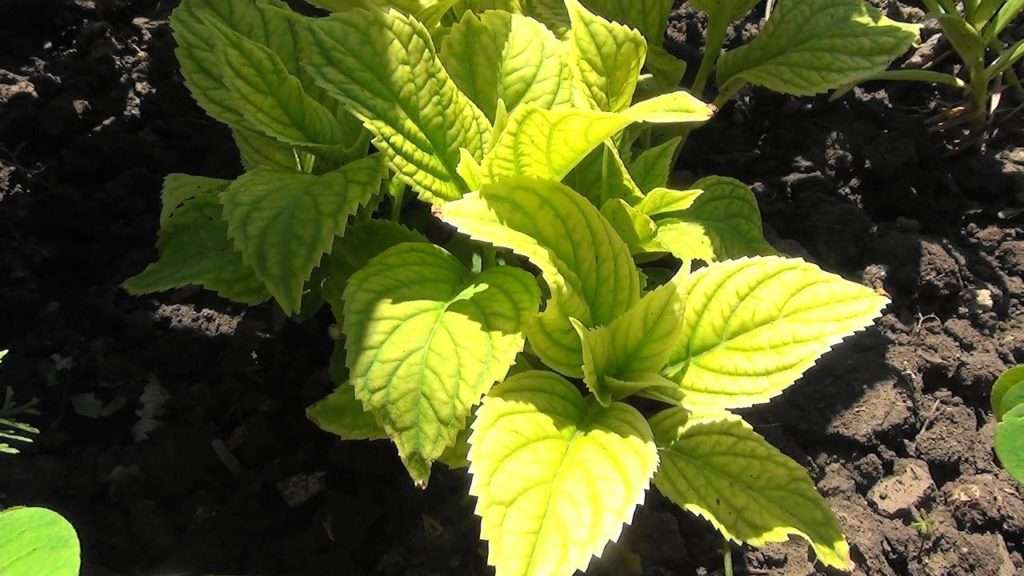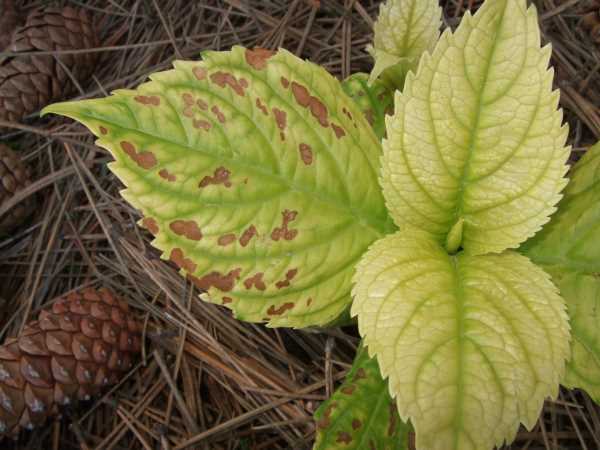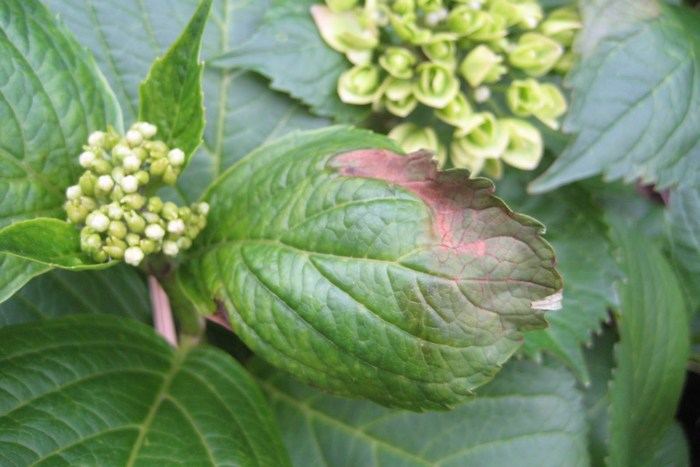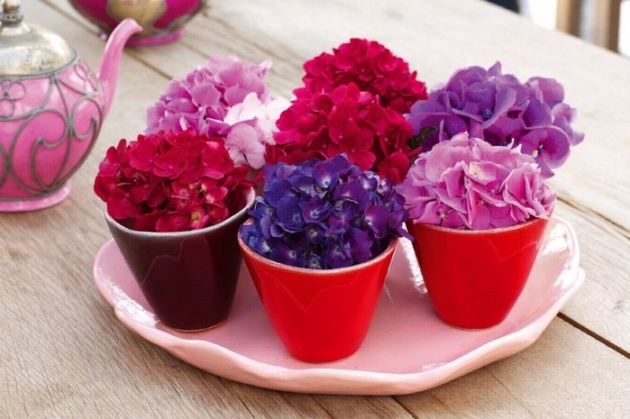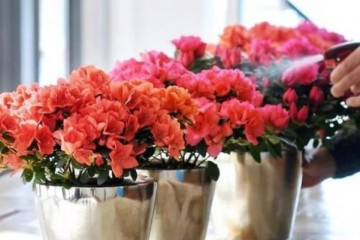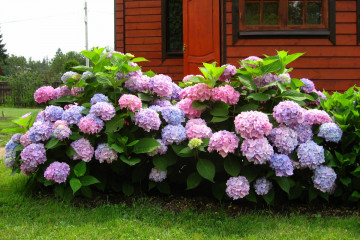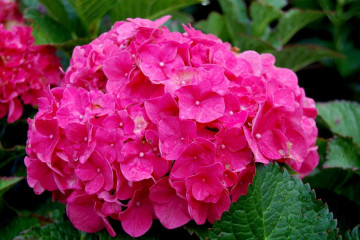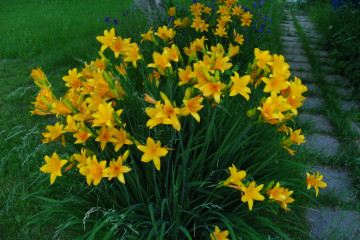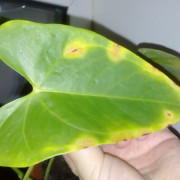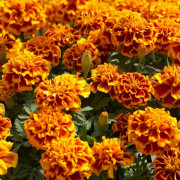Why does hydrangea have pale leaves - what to do
Content:
Hydrangea can become a real decoration not only at home, but also in any personal plot. Increasingly, it began to be used in floristic compositions and in landscape design. These can be shrubs or very showy mini-trees. Despite the fact that hydrangea is not a "problem" plant, it still requires some care. Violation of certain rules will undoubtedly lead to a change in the appearance of the flower, and in the future to disease.
Care errors that cause leaves to turn pale and lighter
Discoloration of the leaves is the first sign of plant disease. This trouble can arise due to a number of factors, a detailed study of which will help not only cure the flower, but also prevent the appearance of ailments in the future.
Failure to comply with certain requirements and rules will lead to the appearance of not only pale leaves in the hydrangea, but also the subsequent illness. It can be caused by:
- waterlogging of the substrate in which the flower grows;
- finding a plant under the scorching rays of the sun;
- lack of essential micronutrients;
- a sharp change in the place of growth;
- changes in the level of soil acidity.
An inattentive attitude to growing conditions will lead to metabolic disorders in hydrangeas, fungal or even viral diseases.
Deficiency of nutrients due to insufficient feeding
If hydrangea leaves brighten, how to feed? Each stage of development requires the use of certain micronutrients.
Hydrangea leaves begin to turn yellow and pale with insufficient feeding. If the hydrangea leaves turn white, it needs to be fed 3 times a month. It is important to alternate between organic and mineral preparations.
Nitrogen
It is important to figure out why hydrangeas have pale leaves before fertilizing the soil. If the yellowing of the leaves occurs during flowering, then this means that the flower does not have enough nitrogen.
It is important to feed it correctly in the spring, during the budding period. Timely introduction of potassium and phosphorus into the soil will not allow the "green mass" to lighten and fall off. Top dressing at this stage should be carried out weekly.
Iron
If the leaf acquires a light green hue, and the veins remain green, then the hydrangea lacks iron. Chlorous insufficiency occurs due to spring temperature changes and disturbances in the process of chlorophyll formation in the leaves. Another sign is the small size of the leaf plate.
Treatment can be carried out using the folk method:
- completely change the soil under the flower;
- pour water over the new soil with the addition of a drop of any acid (citric, acetic);
- introduction of any iron-containing preparations (iron chelate, Ferovit).
Watering errors
If watering rules are not followed, the plant may turn white.Hydrangea has light leaves, what should I do? It is necessary to normalize the irrigation regime, supply the hydrangea with the necessary amount of moisture.
- In dry times, watering should be carried out at least 2 times a week. The procedure should be carried out only after the top layer has completely dried.
- Spraying will keep the hydrangea at the correct moisture level.
Also, the leaves can dry out due to the use of "bad" water. For a large-leaved species, it is recommended to use only settled and warm water.
Violation of acid-base balance
The hydrangea substrate should have a pH of 3-5. A change in foliage color can be caused by a change in foliage.
It is very easy to check the acidity level even at home. For this you will need:
- litmus paper;
- dishes with water at room temperature;
- the land in which the hydrangea grows.
The procedure is very simple. The soil is moistened with water and litmus paper is applied to the resulting gruel:
- red color characterizes high acidity;
- the leaf is painted in blue or light green with a neutral indicator;
- yellow litmus paper - slightly acidic earth;
- pink color appears at moderately acidic values.
What if hydrangea has pale green leaves? First of all, you need to adjust the acidity of the soil. You can increase the level with lemon juice. 2 drops of lemon are added to a liter of water and the earth is watered with this composition. You can also use any coniferous twigs for planting, which are simply laid on top of the drainage.
Incorrect transplant
Damage to the root system during transplantation often leads not only to external changes in the flower, but also to a slowdown in the growth and development of hydrangeas. After the procedures carried out, the plant must be abundantly moisturized.
Excess or lack of sunlight
Placing the plant on the south side may damage and burn the leaves. Hydrangea loves sun and light, but direct sunlight is destructive for it.
The best place to locate the plant is in the western or eastern areas.
In low light, hydrangea can stop growing and get sick.
Diseases causing leaf whitening
There are many diseases that, with improper care, can harm the hydrangea and lighten its leaves.
- Powdery mildew
The appearance of a gray bloom on the lower part of the leaf indicates a powdery mildew infection of the hydrangea. The upper part is covered with spots and later becomes brown in color.
You can save the flower with Fitosporin (at an early stage) or Topaz (when neglected).
- White and gray rot
Gray or white rot appears as a discoloration of the leaves. Hydrangea is literally all covered with gray or white spots, the leaves dry out and completely crumble.
You can save the plant with a solution of Bordeaux liquid or copper sulfate.
- Ascochitous spot
Outwardly, the disease manifests itself in the form of spots that instantly grow. Irregular circles are colored yellow-brown and framed with a dark border. With a protracted course of the disease, the leaves fall off completely.
Fungicides are used to combat the disease.
Various pests that discolor sheet plates
If the plant is damaged by a spider mite, the leaves turn yellow and dry completely. An untimely reaction can lead to the death of the flower. A damaged plant can be cured with pesticide preparations.
If the leaves have turned black, then most likely, upon examination, you can find harmful aphids.The insect covers the plant with sticky sap, which becomes the basis for the instant development of a fungal disease. Pollination of a flower with tobacco dust will perfectly help and save the plant in a short time.
What to do if the hydrangea turns white
Having studied the possible causes of what happened, you should take the most responsible and competent attitude to the treatment of hydrangea. Most often, whitening occurs due to a lack or excess of nutrients.
How to feed the shrub
Feeding hydrangeas in spring should include organic fertilizers.
You can use a mullein, in a ratio of 1:10. Bird droppings are also great for this (1:15). You need to insist on them during the day.
In summer, it is recommended to use green infusions to form flowers; any weeds can be used. The use of herbal fertilizers will allow the leaves of paniculate subspecies to acquire a beautiful rich color.
Feeding with the addition of yeast will call to eliminate the cause of the appearance of light leaves in the hydrangea and nourish the plant with the necessary useful microelements. You can make it according to the following recipe:
- 1 bucket of water;
- a loaf of dark bread;
- 5 tablespoons of dry yeast;
- 1 tablespoon granulated sugar.
The fermentation process should last at least 2 days.
Preventing the appearance of pale green leaves
Diseases develop under specific conditions, improper agricultural practices. It is important to carry out preparatory procedures before planting or transplanting:
- hydrangea seedlings are subject to pre-treatment with diluted copper sulfate;
- in spring and autumn, the plant should be treated with Bordeaux liquid;
- 2 days before planting, any insecticides should be applied to the ground;
- weeds and fallen leaves must be constantly removed from the site.
For a plant to be healthy, it must grow under certain conditions:
- compliance with watering norms - it is not recommended to allow overflow or long-term drying out of the soil;
- the water should be settled and in no case cold;
- it is important to avoid drafts;
- the air temperature in the room (for indoor varieties) should be maintained at +22 - +24 degrees;
- it is necessary to protect the flower from direct rays of the sun;
- feeding and treatment from diseases and pests are mandatory procedures.
The most correct answer to the question: what to do if hydrangea has pale leaves? Prevent! To prevent massive damage to the leaves, regular inspection of the plant and constant monitoring of the level of acidity of the soil will help. It is important to understand that the process is much easier to stop at the stage of yellowing than when it is started.
Timely implementation of preventive measures will not only avoid these troubles, but also give a beautiful plant that will delight you with its beautiful inflorescences for many years.
